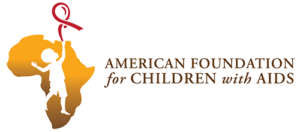For more than 30 million adults around the world, carrying HIV is an onerous burden. Maybe they know that inside them there is something lethal lying dormant, waiting—and maybe they don’t. But when HIV manifests as AIDS, half of these victims won’t have access to the proper treatment for it, and they will probably die. The economic, physical, and emotional strain of living with AIDS is incredibly wearing, and adults around the world suffer under that burden.
But for a lot of unfair reasons, the plight of children with AIDS is worse. First of all, many of them are born straight into treatment. If the pregnant mother has not been taking antiretroviral pills (which is true of about half of all HIV+ mothers—more than half in remote, resource-poor settings), the at-risk child enters the world greeted by a week’s worth of nevirapine injections, which has approximately a 50% of preventing mother-to-child transmission of virus. These injections are used most often if the mother failed to come forward for antiretroviral treatment earlier in the pregnancy, not because she did not have access, because, again, in resource-poor settings, both ARV AND nevirapine may not be available.
Diagnosing HIV/AIDS in children is more expensive and complicated that diagnosing adults. This is because through breastfeeding, whether or not the child truly becomes infected, the mother transfers HIV antibodies into the child’s bloodstream. These may cause the HIV tests to come back falsely positive, so to properly test the child, physicians must use a more expensive and rarer test, called the polymerase chain reaction. Since this test is not available in poor, rural areas, it is often impossible to test at-risk children for HIV.
Even more unfortunate is the fact that children succumb more quickly to AIDS than adults do. Their immune systems are easier for the HIV virus to break down, so when a child is born HIV+, it’s really bad news. Whereas an adult will typically remain outwardly health for 6-8 years after their initial infection, children can become sickly and die within a year. And while antiretroviral medication is now much more available than it was even a decade ago, the vast majority of anti-AIDS drug combinations were designed with adults in mind. There are no directions for children! Fortunately, a few studies and the experiences of children who have taken adult medication by necessity show that smaller doses of adult ARV are generally effective at keeping AIDS at bay in children, but nevertheless, the lack of knowledge of how children’s bodies react to ARV keeps their guardians in the dark should a rogue side effect occur.
Finally, on top of all of that, all children with AIDS have HIV+ mothers—that’s more or less the only way they can get it. This means that the children’s mothers and often fathers as well are at risk of dying at a time when the children are both young and suffering. Most children with AIDS have lost at least one parent to the disease, and many are orphans. Luckily, most cultures in sub-Saharan Africa, where the disease is most prevalent, emphasize close extended families, such that most orphans are taken in by relatives. The loss of a working parent still a crushing blow, however, draining the resources available to the child’s new caretaker.
For all of these reasons, the AFCA has chosen to focus on helping children with AIDS and their families survive and live healthy and productive lives with a decent level of comfort. Browse our main site to learn how you can help children with AIDS see a brighter future!

